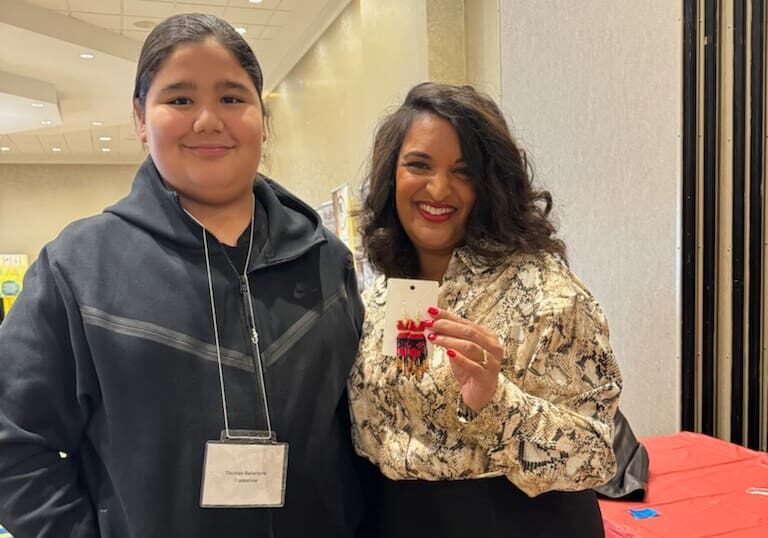What is the difference between cultural appropriation and cultural appreciation? Is wearing a sari to an Indian wedding you were invited to appropriation or appreciation? Is attending a mosque appropriation or appreciation? Is learning how to samba appropriation or appreciation?
Like anything, context is critical in determining intention behind the meaning. If your intention is meaningful and appreciative while recognizing cultural differences, then it’s most likely cultural appreciation.
According to Jason Frishman, Psy.D, intention is solidly aligned with your values. Intentions should be specific, actionable, positive and can also be emotional too. Intentions should involve the emotions you hope and intend to feel about a particular thing or situation, according to Sara Weand, behavioral therapist.
For example, I keynoted the Aboriginal Financial Officers Association of Saskatchewan Conference for the fourth time. Such an honour seeing “old” friends and meeting some “new” ones. A young Indigenous 13-year-old named Thomas creates beaded earrings which can take hours to make. When I stumbled on his gorgeous beaded Indigenous jewelry, I wanted to buy a pair a earrings.
Admittedly, I was hesitant. I was about to keynote in about 45 minutes and wasn’t sure if purchasing and wearing the earrings was appropriation or appreciation. I saw a pair that truly spoke to me- an intricate pair of red and black dress earrings honouring missing and murdered Indigenous women.
From a place of curious compassion, I simply asked Thomas’s mom, is it cultural appropriation or appreciation when a non-Indigenous keynote speaker proudly purchases and wears these beautiful beaded earrings? According to Thomas’s mom who didn’t hesitate in her answer- it’s appreciation, she said with a huge smile.
Of course, it is. Appreciation of the Indigenous culture, commitment, and community. Appreciation of beautiful art. Appreciation of the entrepreneurial spirit. Appreciation of those amazing women who did not come home.
I proudly wear these earrings today
Selecting certain aspects of a culture while ignoring its significance might be considered cultural appropriation. Appropriation can perpetuate stereotypes. Let’s say it’s Cinco de Mayo, a traditional Mexican holiday. You attend a party wearing a sombrero speaking with a Spanish accent. Are you perpetuating a stereotype of a certain cultural group? If you are doing it to ‘be funny’ then probably. If you are wearing traditional clothing to celebrate the meaning of the holiday, then probably not- it’s a fine line but worth probing intention and impact. Under the guise of ‘being edgy’ or humorous, racial stereotyping can be harmful.
According to a HuffPost article, feather headdresses were the rage at music festivals. Yet these headdresses are spiritually symbolic to the Indigenous culture. They don’t have much to do with music festivals other than looking ‘cool’ or ‘edgy’. Wearing accessories from other cultures certainly isn’t off limits but again, context is critical. Does the context of Coachella have anything to do with the culture you are essentially exploiting? If not, perhaps the headdress isn’t contextually appropriate for a Coachella concert and why some music festival organizers have prohibited wearing feather headdresses. These music festival organizers ultimately became allies in this space.
There is a fine line and balance between cultural appropriation and cultural appreciation. Some might say the ‘terminally offended’ are not appreciating others’ cultures. For the most part, most people are not wearing a cultural costume to offend or mock. Again, it comes down to intention, but it also comes down to impact. According to Pat McCormack, a professor emerita at the University of Alberta’s Faculty of Native Studies who studies material culture and stereotypes, headdresses have a set of spiritual and ceremonial relationships that are more than simple esthetics. Traditional headdresses are given and earned- not only are they not something a non-Indigenous person should purchase or wear, but they are also not something Indigenous people would buy or make for themselves. They are comparable to honours such as a military medal, which should only be worn by the recipients of those honours.
Some ways to celebrate culture include the following:
- Learn about your own culture. To understand and appreciate other cultures start with your own cultural and contextual lens of understanding
- Understand, recognize, respect, and embrace cultural differences. My best tip to offer would be to ask, “what is your cultural background?” then share something about your own cultural background. Relationship-building goes both ways.
- Refrain from using artifacts and sacred symbols as accessories, however, wear traditional dresses, jewelry or display interesting art in your home if you are intentional about celebrating that culture
- Ask yourself- what are my intentions? Are they, indeed, genuine?
- Call others into a conversation rather than calling them out. Engage in meaningful conversations about cultural appropriation. If it’s manageable, it’s mentionable- according to Mr. Rogers, so let’s continue to have these uncomfortable conversations and become comfortable with being uncomfortable till it’s simply having a healthy dialogue.
Think of yourself as a student if you truly wish to appreciate a culture. Learn and appreciate your own culture as it offers a sense of purpose, belonging and meaning as well as an appreciation of others’ cultures. Embrace the positives about your own culture but feel free to let go or ‘break the cycle’ of the negative. A Malay proverb states, a tree with strong roots laughs at storms. If there’s a belief, a tradition or even generational trauma that roots itself in cultural heritage then let go of what is not serving you. This does not mean forget but rather honour the past and embrace a more positive future for yourself and future generations. In order to change the story, we need to change the narrative. Listen, learn, observe, ask questions and honour. Ask yourself- what is my intention- and be honest with yourself about the answer. If the intentions are ultimately positive, then celebrate and appreciate culture…as it should be.
Interested in viewing Thomas’s beautiful work? Visit his Instagram page @thomas.tkb.3
Sources:

